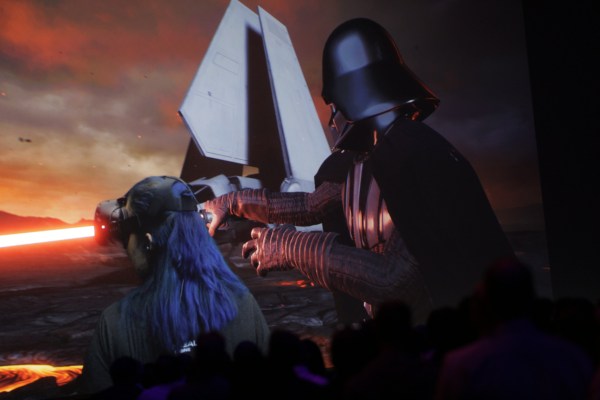For Apple, augmented reality is the clear short term play. It’s not so much that the company doesn’t see any future in virtual reality – it’s just that the tools for a quality AR experience are already here, in the pockets of millions of users.
Your smartphone’s cameras, processing and interface are already an ideal delivery service for an enjoyable augmented reality experience. Pokemon Go proved the point pretty damn well, and the money is still rolling in. Fittingly, Apple doubled down on its commitment to AR this week with the launch of the ARKit platform, which will provides developers APIs to bring more augmented experiences to iOS devices.
No surprise there. Tim Cook seemingly drew ideological lines in the sand late last year, when he told Good Morning America, “My own view is that augmented reality is the larger of the two, probably by far, because this gives the capability for both of us to sit and be very present talking to each other, but also have other things visually for both of us to see.”
While it wasn’t a condemnation of virtual reality, it sure sounded like Apple didn’t see much future in the tech. And its lack or public embrace of VR in all forms pointed to a company that didn’t seem to have much interest at all, lending credence to speculation that the company was writing it off as a passing fad. This week’s WWDC keynote marked an important shift – and the first time that the company gave VR any stage time at this sort of event.
But it wasn’t a VR headset or new platform, it was an acknowledgement that, as a leading producer of technologies for creative studios, the company has to embrace the tech on a developer level. And so, typical of all things WWDC, this was more of a taste of things to come. Apple noted that its new iMacs are powerful enough to support the tech and launched a new version of metal that can be used to develop it.
ILM was on-hand to demo a cool Star Wars VR experience in which Darth Vader stalked the volcanic world of Mustafar (why the Sith Lord wanted to go back there, I’m not sure). But the whole thing was little more than proof of concept – and an open invitation for developers to start creating. The other big piece of the puzzle was Valve’s addition of SteamVR beta for the Mac.
For now, implementation is a bit awkward. The company showed off a MacBook Pro attached to a black, toaster-sized Sonnet external GPU chassis, bringing VR development to macOS. Not exactly elegant. More of a toe dip, really, but it’s proof that, while Apple seemed reluctant to embrace VR in recent years, it has no intention to let the technology pass it by moving forward.
Of course, it’s easy to see why the company might have been hesitant to fully embrace VR in the past. The technology seems to rear its head once a decade and then vanish into nothingness. But while this latest version of the technology is still early days, this go round feels more substantial than any that have preceded it, courtesy of products like the Vive and Oculus Rift. And in 2017, a company like Apple failing to embrace VR feels like a huge missed opportunity.
For now, however, it’s planting its flag and sowing the seeds. And those products will hopefully bear some fruit in the year to come. Meantime, however, the company seems less interested in offering a compromise. A low cost, cell phone-powered headset isn’t the way it’s is looking to deliver virtual reality to its user base. It’s certainly not an experience that can compete with desktop-powered VR.
And it seems reasonable to imagine that a poor first VR experience could sour some users on the technology’s future potential. For augmented reality, on the other, Apple doesn’t have to worry about getting that hardware in users’ hands. It’s already there, it’s good, and now is the time to embrace it.
